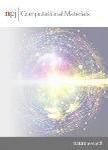Boron arsenide heterostructures:lattice-matched heterointerfaces and strain effects on band alignments and mobility
作者机构:Department of Materials Science and EngineeringUniversity of MichiganAnn ArborMI 48109USA
出 版 物:《npj Computational Materials》 (计算材料学(英文))
年 卷 期:2020年第6卷第1期
页 面:1636-1642页
核心收录:
学科分类:081702[工学-化学工艺] 08[工学] 0817[工学-化学工程与技术]
基 金:This work was supported by the Designing Materials to Revolutionize and Engineer our Future(DMREF)Program under Award No.1534221,funded by the National Science Foundation K.B.also acknowledges the support of DOE grant DE-SC0020347 This research used resources of the National Energy Research Scientific Computing Center,a DOE Office of Science User Facility supported by the Office of Science of the U.S.Department of Energy under Contract No.DE-AC02-05CH11231
摘 要:BAs is a III–V semiconductor with ultra-high thermal conductivity,but many of its electronic properties are *** work applies predictive atomistic calculations to investigate the properties of BAs heterostructures,such as strain effects on band alignments and carrier mobility,considering BAs as both a thin film and a substrate for lattice-matched *** results show that isotropic biaxial in-plane strain decreases the band gap independent of sign or *** addition,1%biaxial tensile strain increases the in-plane electron and hole mobilities at 300 K by60%compared to the unstrained values due to a reduction of the electron effective mass and of hole interband ***,BAs is shown to be nearly lattice-matched with InGaN and ZnSnN2,two important optoelectronic semiconductors with tunable band gaps by alloying and cation disorder,respectively.



